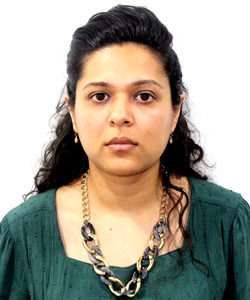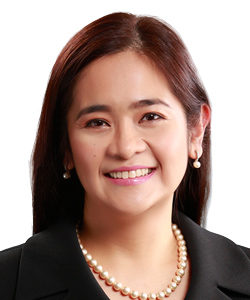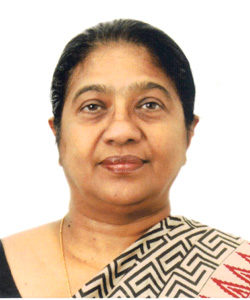As brand identification moves beyond traditional realms and into ever more interesting spheres of influence, staying abreast of trends and changes to law in the Asian region is imperative
Navigation:
India | Philippines | Sri Lanka | Taiwan
INDIA
The evolving world is undergoing a silent intelligence revolution. India is not far behind and interesting trends are developing. The following highlight a number of trends and suggests how they may evolve.
The government is an entrepreneur

Senior partner & head of trademarks, contractual & commercial IP
Anand & Anand in Noida
Tel: +91 120 4059300
Email: safir@anandandanand.com
The Indian government, with the aim to nurture entrepreneurship in the country, has taken a huge leap and become the harbinger of the ‘Make in India’ and ‘Digital India’ campaigns.
In its quest to encourage innovation and ownership, the government is leading the mandate and has decided to become an entrepreneur. Successful registrations in key trademarks have been acquired, such as: ‘Make in India’ – the Department of Industrial Policy and Promotion, Ministry of Commerce and Industry, Government of India; and Incredible India – the Ministry of Tourism, Government of India.
These tag lines and slogans have become inextricably linked with the Indian government. This entrepreneurial mindset is bound to percolate to the judiciary as quasi-judicial bodies such as the Trade Marks Office (TMO) become more amenable to creating a progressive environment on acceptance of trademarks, suggestive trademarks, slogans, tag lines, etc.
Branded patriotism

Partner
Anand & Anand
in Noida
Tel: +91 120 4059300
Email: twinky@anandandanand.com
Leading brands are moving towards a patriotic approach in their brand promotion and marketing campaigns. Hero MotoCorp recently released an advertisement featuring the ‘HeroSalutes’ hashtag with a theme based on honouring Indian soldiers. PayTM had also released an ad campaign last year around Independence Day, which was centered on combating corruption in India.
The outcome of such country-centric impactful advertising is that emotional quotient through CSR activities is converting into brand equity and, hence, getting protected.
Yin-Yang
The TMO in India faces an ambivalent situation. On one hand, the TMO has been on a quest to clear its pendency, not particularly the historic backlog but more in the nature of expediting and processing the prosecution of trademarks in a more organized fashion. On the other side, in its zest to expedite, the TMO has been delegating the critical task of hearings to examiners who have been refusing various trademarks. The refusals are not in the nature of speaking orders, and hence, the process of getting relief appears an uphill task.
Such actions are being challenged in the High Court, and the authors believe it is a temporary situation. Eventually, the courts will streamline the process and reinforce order.
Return to national filings
The Madrid Protocol prescribes a timeline of 18 months, which has to be adhered to. In multiple cases, trademarks are under challenge in opposition proceedings in India, but due to the timeframe of 18 months lapsing from the date of filing of the trademark applications, these trademarks are being construed as deemed registered by the TMO. In the face of global competition, businesses cannot afford to take such risks with their vital IP.
Filing national trademark applications, thus, seems to be a safety net.
Prior adoption
The TMO has become strict with the nature of documents that are used to support prior adoption and use. This is a red flag for all foreign brands that have traditionally opted not to file for trademark protection in India, or postponed the idea of filing until the business acquires more maturity.
It is imperative for prior right holders to scout regions of interest and develop filing plans to secure business interest.
Well-known trademarks
Social and digital media have made the world a small place, and the reach of a brand to unknown parts of the world, and unknown consumers, has never been better.
India already had the concept of well-known trademarks, but has intensified its practice on declaration of trademarks as well known. A recent example of this is the declaration of the trademark TCS as well known. The courts in India recognized the power available to proprietors to obtain a declaration and directed that the option of filing petitions to seek a well-known declaration must be used, and also issued a direction to the registrar of trademarks to act on this quickly.
This opportunity is already being acted on by proprietors and will have more takers.
Intermediary responsibility, liability
Delhi High Court, in Christian Louboutin SAS v Nakul Bajaj and Ors, in its 2018 decision addressed the issue of intermediary liability. Darveys, a website, offers luxury brands for sale. Christian Louboutin SAS alleged that Darveys sells impaired products or counterfeits. The website also uses Christian Louboutin’s image and uses “Christian” and “Louboutin” as meta-tags.
Darveys contended that the products are genuine and they merely facilitate booking of orders. Products are sold directly by sellers and no after sales services or warranty is offered by Darveys.
The High Court analyzed the responsibilities of e-commerce platforms that actively conspire, aid or induce the commission of unlawful acts as opposed to situations for taking advantage of the safe harbour provision.
With the spread of multiple e-commerce platforms, this judgment has led to a profiling of such platforms and will have a positive impact on future exploiters.
Sensory trademarks
Businesses are creating customized experiences for the consumer, guiding their spending habits. This new wave of marketing has also paved the way for non-traditional trademarks that target the senses of touch, smell, sight and sound.
The economic effect of sensory marketing has been measured by Unilever’s Dove soap. Research consultancy Millward Brown estimates that the smell of the product contributes US$63 million to its annual US revenues, while touch accounts for US$34 million, and sight US$14 million.
Protection in non-traditional trademarks is a new trend. A recent example was when the TMO granted registration to the image of The Taj Mahal Palace Hotel in Mumbai.
This new breed of trademarks is here to stay.
Celebrity liability
Liability on celebrity endorsing has been made direct and extensive. India has seen instances where celebrities had to move the court to discharge their liabilities. M S Dhoni, the renowned cricketer, had to approach the Supreme Court of India to recover his dues after Amrapali Group, a real estate company, defaulted with its home owners, impacting Dhoni’s image as the brand ambassador.
Celebrities have become cautious during their contract negotiations.
Going local
Brands are moving towards a millennial approach and using local language to create a unique brand identity aligned to a region. The model has been successfully followed by international brands like Burger King and McDonald’s, which have developed localized advertisements and menus to appeal to local taste buds.
India is a unique market with eclectic diversity that will be capitalized.
IP audits
The Securities Exchange Board of India has made it mandatory for companies to disclose the status of their IP in the Red Herring Prospectuses.
With this, IP audits have become critical to gain investor trust.
Advertising compliance
The Advertising Standards Council of India has started its own actions against brands for false, exaggerated or disparaging claims in advertisements, with substantial complaints issued last year. Seeking legal counsel has gained traction, as it also adds to reputation management.
Advertisements are corporate assets and it is vital to ensure that they are not just legally compliant, but creates a harmonious conversation between marketers, advertisers and lawyers to produce a value-driven campaign.
Damages in India
Courts in India are increasingly awarding damages in IP disputes. It has become vital for promoters to ensure diligence and pre-empt what may impact the financials of a company.
This has increased correlation between IP and market capitalization; the impact on stock markets has also started a conversation on overlaps with corporate governance.
Extension of deadlines
The Intellectual Property Appellate Board recently digressed while interpreting the Trade Mark Rules, 2017, on seeking extensions for filing evidence a general clause for extending deadlines where no time limit is specified.
This is a positive move for proprietors and allows time for collation of documents.

Anand & Anand
First Channel Building
Plot No 17 A, Sector 16 A
Film City, Noida 201301 (UP) India
Tel: +91 120 4059300
Fax: +91 120 4243056 (058)
www.anandandanand.com
PHILIPPINES
The Philippines adheres to a first-to-file policy in trademark protection. The trademark registrant is presumed to be the owner of the mark and has the exclusive right to prevent all third parties not having their consent from using, in the course of trade, identical or similar signs or containers for goods or services that are identical or similar to those in respect of which the trademark is registered, where such use would result in a likelihood of confusion. Consequently, an unregistered mark is, in general, subject to appropriation by any third party who is able to successfully obtain a trademark registration covering the mark.

Partner and head of intellectual property practice group
Quisumbing Torres in Manila
Tel: +63 917 512 4936
Email: Bienvenido.Marquez@quisumbingtorres.com
Local laws and regulations – particularly Republic Act (RA) No. 8293 of The Intellectual Property Code of the Philippines, which took effect on 1 January 1998, and was amended by RA No. 10372 in 2013, as well as its implementing rules and regulations and other issuances of the Intellectual Property Office of the Philippines (IPOPHL) – generally provide the basis for the protection and enforcement of trademarks and other IP rights.
The IP code and the relevant regulations also incorporate and reinforce the Philippines’ commitments under various international treaties and agreements, such as the Paris Convention for the Protection of Industrial Property, the Protocol Relating to the Madrid Agreement Concerning the International Registration of Marks, and the General Agreement on Tariffs and Trade (GATT) Uruguay Round, particularly the Agreement on the Trade Related Aspects of Intellectual Property Rights (TRIPS agreement).
The rights to a mark, which includes trademarks and service marks, are acquired through registration by the true owner of a mark. Priority is given to the party that first applies for registration. There is a single procedure for both foreign and local applicants for the registration of marks. It is important to note, however, that an applicant is also required to file a declaration of actual use of the mark in Philippine commerce within three years from filing of the application to complete an application.
An application to register a mark may be filed by a natural person (individual) or a juridical person (corporation, partnership or association). Non-resident applicants are required to appoint an agent residing in the Philippines upon whom notices and processes may be served.
An effective filing date is accorded an application on the date the IPOPHL receives the following:
- An express or implicit indication that registration of a mark is sought;
- The identity as well as nationality/state of incorporation and complete address of the applicant;
- Indication sufficient to contact the applicant or representative, if any;
- A reproduction of the mark;
- The list of goods or services for which registration is sought; and
- The appropriate filing fee.

Partner, intellectual property practice group
Quisumbing Torres in Manila
Tel: +63 917 819 4961
Email: Divina.Ilas-Panganiban@quisumbingtorres.com
After filing, the trademark application is examined by an IPOPHL trademark examiner. If the examiner finds that the mark should not be registered for any reason, an official action paper will be issued stating the reasons why the application cannot be registered, and directing the applicant to argue against the objection or comply with additional requirements. The applicant has two months from the mailing date of the action paper (subject to an extension of two months) to file a response.
Once the objections are overcome, the trademark application will be allowed and published for purposes of opposition in the IPO Electronic Gazette. Any person who believes that they would be damaged by the registration of a mark may file an opposition to the application within 30 days from the date of publication, subject to three consecutive extensions of 30 days each.
If no opposition is filed, the application will be allowed for issuance of a certificate of registration, and the certificate of registration will then be issued by the IPOPHL. The entire registration process (without any opposition by a third party) usually takes six to 12 months.
The Philippines, having acceded to the Madrid Protocol, may be designated in an international registration originating from another member state. An international registration designating the Philippines shall have the same effect, from the date of the international registration, as if an application for the registration of a mark had been filed directly with the IPOPHL.
In order to ensure that the mark is available for use or registration, a full trademark availability search is always recommended. Once the proposed mark and the covered goods or services are known, a search of the IPOPHL internal and external online databases may be conducted. The results may be reported within three to five days.
The owner of a registered mark is presumed to have the exclusive right to use the mark and to prevent all third parties not having their consent from using, in the course of trade, identical or similar signs or containers for goods or services that are identical or similar to those in respect of which the trademark is registered, where such use would result in a likelihood of confusion.
The act of infringement covers a broad range of activities, including acts preparatory to the sale of goods or rendering of services, and is not limited to the substitution or fraudulent use of a mark or name. The law explicitly provides that liability attaches to the offender regardless of whether or not the sale of the goods or rendering of the services took place.
In determining what constitutes colourable imitation, Philippine law adopts the dominancy test, which provides that any person who uses in commerce any colourable imitation of a registered mark or a dominant feature of it shall be liable for damages by reason of the infringement of the registered mark.
There was no specific law dealing with trademark squatters. If the mark is filed or registered with the IPOPHL by a trademark squatter, an opposition or cancellation action may be filed by the true owner. Criminal, civil and administrative actions for trademark infringement, unfair competition and other IP violations under the IP code may also arguably be instituted against such trademark squatters. Moreover, a civil action based on the abuse of rights provisions of RA No. 386 or The Civil Code of the Philippines may be filed.
Recently, RA No. 10175 or The Cybercrime Prevention Act of 2012 criminalized cyber-squatting or the acquisition of a domain name over the internet in bad faith to profit, mislead, destroy reputation, and deprive others from registering the same. Under the law, trademark squatters may be imprisoned for six to 12 years, or may be made to pay a fine of PHP200,000 (US$4,000) up to a maximum amount commensurate to the damage incurred, or both imprisonment and a fine.
Under the IP code, a person who has identified in the mind of the public the goods they manufacture or deal in, their own business, or services, from those of others, whether or not a registered mark is used, has a property right in the goodwill of the said goods, business, or services so identified, which may be protected in the same manner as other property rights.
“Unfair competition” is committed by any person who employs deception or any other means contrary to good faith to pass off their own manufactured or distributed goods, business or services for those of the one having established such goodwill, or who commit any acts calculated to produce the same result. Generally, the elements that have to be established to succeed in a claim for unfair competition or passing off are:
- Reputation attached to the goods or services;
- Misrepresentation to the public leading, or likely to lead, the public to believe that the goods offered by one are the goods of the owner entitled to protection; and
- Damage or the likelihood of damage suffered by reason of the erroneous belief.
Trademark registration is not required in an unfair competition action.
Criminal, civil and administrative actions may be instituted by the aggrieved parties to protect their trademark rights from infringement by third parties. Such actions are distinct from each other and may be instituted simultaneously. As a matter of practice, however, when both criminal and civil proceedings are initiated at the same time, the civil proceedings will be suspended pending a determination of the outcome of the criminal proceedings. The court hearing the civil case may consider itself bound by the findings of the court hearing the criminal case. On the other hand, the administrative case may proceed independently of either the criminal or civil proceedings.

12th Floor, Net One Center
26th Street corner 3rd Avenue
Crescent Park West,
Bonifacio Global City
Taguig City, Philippines 1634
Email: QTInfoDesk@quisumbingtorres.com
SRI LANKA
A trademark is the most valuable asset of a company. It is the way a business shows its customers who they are and what product or services they provide, and it distinguishes competitors’ goods.
The law relating to registration of trademarks in Sri Lanka is governed by the Intellectual Property Act No. 36 of 2003. The act defines a trademark as any visible sign serving to distinguish the goods of one enterprise from those of another. Thus, an audible sign, olfactory sign, or any other non-visual sign does not fall within the definition of a mark in Sri Lanka.

Partner
Julius & Creasy
in Colombo
Tel: +9411 2336277
Email: anomi@juliusandcreasy.lk
Trademarks are used to identify and distinguish the source of the goods of one party from those of others in the course of trade. For registration of marks, Sri Lanka uses the same classification as the Nice Agreement, even though it is not a party to it. This classification consists of 45 classes, of which 34 are in respect of goods and 11 in respect of services.
The exclusive right to a mark can be acquired through registration. It is important to note that, unlike in other jurisdictions, “use” is not a requirement for registration of a trademark in Sri Lanka. Registration of a mark may be granted to the party that fulfills the conditions of a valid application first, or validly claims the earliest priority for an application.
The director-general will not register a mark that is likely to mislead the public, or an unregistered mark used earlier in Sri Lanka by a third party in connection with, or identical to, similar goods or services if the applicant was aware, or could not have been unaware, of such use. The act prohibits the registration of marks that are identical or similar to well-known marks and trade names. Marks will not be registered if they are identical or sufficiently similar to, or constitute a translation, transliteration or transcription of, third-party marks for identical or similar goods or services. It is immaterial whether the well-known mark is registered in Sri Lanka.

Associate
Julius & Creasy
in Colombo
Tel: +9411 2422601 (ext. 379)
Email: navindi@juliusandcreasy.lk
A mark will not be registered if it consists of shapes or forms imposed by the inherent nature of the goods or services, or their industrial function. Examples of these types of shapes are standard wine bottles for wines, or a cylindrical mug shape with a standard handle for coffee mugs. When a shape is claimed as a trademark, the test is whether the shape claimed is capable of distinguishing the goods or services of one trader from the similar goods or services of another. The relevant question is whether the shape is one which other traders are likely in the ordinary course of their business, and without any improper motive, to desire to use upon or in connection with their goods.
Section 103(1)(b) of the act states that a mark that consists exclusively of a sign or indication that may serve in the course of trade to designate the type, quality, quantity, intended purpose, value, place of origin or time of production or supply of the goods or services concerned, is not admissible. The determination of the “descriptiveness” largely depends on the relevant facts and circumstances.
A mark that consists exclusively of a sign or indication that has become, in the language or bona fide and established trade practice in Sri Lanka, a customary designation of the goods or services concerned is not admissible.
A mark that is incapable of distinguishing the goods or services of one enterprise from those of another is also inadmissible. This provision acts as a blanket provision to cover all signs and indications that are incapable of distinguishing the goods or services of different enterprises. It is fact-sensitive.
For example, a single letter is too simple to serve as a mark. By contrast, a relatively long slogan may be too complicated to indicate the origin of the goods. However, in Viacom International Inc v The Maharaja Organization Ltd, the court held that even a single letter can constitute a valid mark under special circumstances. Hence, the letter “M” was allowed in combination with the letters “T” and “V” for television services.
Another example is colours. A combination or arrangement of colours can constitute a lawful mark. However, a colour per se cannot constitute a valid mark unless it is a colour other than a basic or common colour. The best example is Cadbury purple.
Cadbury has famously battled over its rights to monopolize the color purple for chocolate products. It has used a particular shade of purple to package a range of products for more than 100 years and believes the colour alone distinguishes its milk chocolates. It successfully trademarked Pantone 2685C in several countries including the UK and Australia.
It does not give Cadbury general ownership of all uses of that particular shade of purple. But it allows them to prevent competitors from using that shade, or a confusingly similar shade, for packaging chocolate products.
A mark that consists of any scandalous design, is contrary to morality or public order, or, in the opinion of the National Intellectual Property Office director-general or any court to which the matter may be referred, is likely to offend the religious or racial susceptibilities of any community, is not admissible.
Section 103(1)(f) denies registration to a mark that is likely to mislead trade circles or the public as to the nature, source, geographical indication, manufacturing process, characteristics, or suitability for the purpose of the goods or services concerned. The misleading character of a mark in these instances is intrinsic and inherent in the mark itself, and differs from the likelihood of misleading caused by an identical or similar mark.
Whether a mark is inherently misleading or not depends on the surrounding facts and circumstances of each case. An objection raised under this section may be successfully dislodged if there is enough evidence to show that the public or trade circles are not, in fact, misled.
A mark that does not represent in a special or particular manner the name of an individual or enterprise should not be registered. The expression “special or particular manner” has been held to mean an uncommon manner of expression that strikes the eye, rendering the mark distinctive.
A mark that is, according to its ordinary signification, a geographical name or surname is not admissible as a mark. The phrase “according to its ordinary signification” may mean the understanding of the ordinary people of the country. Words that function solely as geographical names, and which have some obvious or potential connection with the goods or services, have no inherent adaptation to distinguish.
However, a geographical name can constitute a valid mark if a trader can establish, because of the extent to which the trademark has been used, that it does distinguish the applicant’s goods or services from those of other traders. “Ceylon Tea” is Sri Lanka’s best known geographical indication. Surnames are generally not admissible as trademarks.
The commonness of a surname is an indicator of the extent to which the trademark is inherently adapted to distinguish the applicant’s goods or services. Still a signature is accepted as a trademark. An example would be luxury brand PIERRE CARDIN for watches.
A mark that reproduces or imitates armorial bearings, flags or other emblems, initials, names or abbreviated names of any state, intergovernmental international organization, or organization created by an international convention, unless authorized by the competent authority of that state or international organization, shall not be registered.
A mark that reproduces or imitates official signs or hallmarks of a state, unless authorized by the competent authority of that state, shall not be registered.
A mark that resembles in such a way as to be likely to mislead the public about a mark, collective mark or certification mark whose registration has expired and not been renewed during the two years preceding the filing of the application for the registration of the mark in question, or where its renunciation, removal or nullity has been recorded in the register for two years preceding the filing of the application for the mark in question, is not admissible.
A mark shall not be registered in relation to goods or services that are prohibited in Sri Lanka. When a mark consists of a certain word or definition, such as “President”, “Prime Minister”, “Minister”, “State”, “Government”, or any other similar word or term that is likely to mislead the public into believing that such a mark has state patronage or authorization, such marks are not admissible.
Registering a trademark gives the owner the exclusive rights to that mark. It gives the owner an exclusive right to use, license and sell the mark. Most importantly, registration makes it easier to take legal action to prevent others from using a mark. Registration alone is not sufficient. A trader must actively use the mark in the course of trade. If not, it can be removed on the grounds of non-use.
Julius & Creasy
Julius & Creasy Building
No 371, RA de Mel Mawatha
Colombo 3, Republic of Sri Lanka
Tel: +9411 2422601; +9411 2422605 (5 lines); +9411 4708300
Fax: +9411 246663; +9411 2435451
Email: jcship@sltnet.lk
www.juliusandcreasy.com
TAIWAN
The following are some key reports on issues crucial to trademark practice in Taiwan. Taiwan Intellectual Property Office (TIPO) in conjunction with Intellectual Property Office of the Philippines (IPOPHL) holds workshop. From 14-16 August 2018, TIPO held a TIPO-IPOPHL Trademark Examination Practices Workshop. Three senior examiners from the IPOPHL took part in the event.
During the workshop, the Philippine examiners introduced the mechanism used to accelerate the examination process in their country, while Taiwanese examiners shared their online examination process and relevant practices. The two sides also exchanged views on areas such as well-known trademarks, 3D trademarks and regular trademarks. In addition, as part of the programme of the workshop, the Philippine delegation paid a visit to the Branding Taiwan Project Office of the Industrial Development Bureau of the Ministry of Economic Affairs (MOEA), where they learned about how the Taiwan government supports local businesses when they are building global brands.

Partner
Deep & Far in Taipei
Tel: +886 2 2585 6688 (ext. 8139)
Email: yltsai@deepnfar.com.tw
Publication of Examination Guidelines on Procedural Examination of Applications for Trademark Registration. TIPO published the Examination Guidelines on Procedural Examination of Applications for Trademark Registration on 19 October 2018. The guidelines comprise a total of 15 chapters: Preamble, submitting and withdrawing of applications; application fees; trademark application form and filing date; right of priority and right of exhibition priority; applicants; agents; trademark reproductions; designated goods or services; notices stating grounds for intended refusal and disposition of refusal or acceptance of trademark applications; issuing a letter of consent to coexistence; division and restriction of designated goods or services; changes and corrections prior to registration; serving; calculation of period; and request for restoration to the status quo ante. The guidelines are aimed at helping people understand procedural requirements for the application for trademark registration, providing more comprehensive protection of applicants’ rights and interests as well as increasing efficiency in examining applications for trademark registration. TIPO encourages those interested to make use of the guidelines.

Partner
Deep & Far in Taipei
Tel: +886 2 2585 6688 (ext. 8187)
Email: lawtsai@deepnfar.com.tw
The 2018 APEC Workshop on the Best Licensing Practices of Collective Management Organizations (CMOs) to Micro, Small and Medium Enterprises (MSMEs). As CMOs yield licensing to MSMEs (including start-ups, karaokes, traditional shops and franchise stores), in order to establish fast and convenient licensing models in response to technological advancements in the digital era, and to assist the industry in improving service efficiency and creating new values, TIPO organized the 2018 APEC Workshop on the Best Licensing Practices of Collective Management Organizations (CMOs) to MSMEs on 23-24 October. Experts from a number of economies including Australia, Chile, China, Indonesia, Japan, Korea, Malaysia, Mexico, Thailand, Peru, Russia and Vietnam were invited to share and discuss CMO licensing and the latest trends. The two-day workshop was well received by all circles. A total of 350 people joined the occasion, including 27 representatives from the 13 APEC economies such as Russia, China, Chile, Mexico, Malaysia and Vietnam. The attendants all actively contributed and exchanged ideas, and this allowed the participating CMOs, MSMEs and government agencies to gain further understanding of CMO licensing and policy-making in other economies.
Modified classification of goods and services comes into force on 1 January 2019. The Nice Classification, 11th Edition, Version 2019, as modified by the World Intellectual Property Organization (WIPO) came into force on 1 January 2019. In response, TIPO released a modified classification of goods and services based on the Nice classification, in hopes of providing references for trademark applicants. On the modified classification of goods and services, please see the “Combined List of Changes Made to the Class Headings and Explanatory Notes of the Nice Classification, 11th Edition, Version 2019” and the “Comparisons between Version 2018 and Version 2019 of the Nice Classification” on TIPO’s website, in the Goods and Services Information column. For more information, please visit TIPO’s webpage at: https://www.tipo.gov.tw.
TIPO completes analytical reports on IPR regimes in Southeast Asian and South Asian countries (6 March 2019). To assist businesses in learning more about the IPR regimes and practices in the major countries listed in the New Southbound Policy, TIPO recently collected information on the IPR regimes, practices, registration and related procedures in question in six countries – the Philippines, Malaysia, Indonesia, India, Vietnam and Thailand.
TIPO has also written two analytical reports, “Trademark Systems and Developments in Southeast Asian Countries”, and “Patent Systems and Developments in Southeast Asian Countries”, for the reference of companies when setting their southbound IP strategies. The above-mentioned information and reports have been released under “IPR Protection in Southeast Asian and South Asian Countries” on the TIPO website. All members of the public are invited to browse the documents. For more information, please visit (Chinese language): https://www.tipo.gov.tw.
TIPO releases patent and trademark statistics and Top 100 patent applicants in 2018 (6 March 2019). In 2018, TIPO received 47,429 applications for invention patents, an annual increase of 3% and the second year of consecutive growth; 8,082 applications were for design patents, about the same as last year, while 17,910 were for utility models, marking a drop of 8%.
By citizenship of applicants, Taiwanese nationals filed 39,278 applications, marking a 4% year-on-year decrease; while foreigners filed 34,143, a 4% increase compared to the previous year. As to Taiwanese nationals, there were 18,365 applications for invention patents, marking a 1% increase. Also, there were 4,252 applications and 16,661 applications for design patents and utility patents, respectively, representing a 1% and a 9% decrease. Japan topped the list with 14,169 applications, followed by the US (7,345) and mainland China (3,506).
Among the top 100 corporate patent applicants, Taiwan Semiconductor Manufacturing has topped the list for three years. The number of its applications has been growing since 2015, reaching a record-high in 2018. AU Optronics Corp secured second place with 586 applications. As to foreign companies, Qualcomm led with 1,011 applications. This was not only a 67% year-on-year increase for the company but also marked the most significant growth among the top 10 corporate patent applicants. Alibaba Group Holding placed second with 599 applications.
Looking at the structure of the top 100 patent applicants, corporations provided the main momentum in R&D. The numbers of applications for invention patents, utility patents and design patents have all increased, by 2%, 7%, and 53%, annually and respectively. Academic applications for invention and design patents have also grown, by 5% and 26%, annually and respectively, although utility patent applications decreased by 2%. For research institutions, the numbers of applications for invention patents decreased by 5%.
In terms of trademarks, TIPO received 84,816 applications, marking a 1% year-on-year increase – the highest in 18 years. Taiwanese nationals filed 59,840 applications, just 2% less than the previous year. Foreign nationals filed 24,976 applications, 11% more than the previous year. The three main countries of application are: mainland China (5,770 applications, 19% more than the previous year) which remains at the top, Japan (4,728 applications, 21% more than the previous year), and the US (4,187 applications, 14% more than the previous year).
In addition, TIPO has achieved significant results in accelerated examinations. On average, it took nine months for an applicant to receive an Office Action and 14 months to receive examination results of an invention patent case in 2018. As to trademarks, the time periods were respectively five months and seven months. Both the numbers of invention patent and trademark applications pendency were lowered to roughly 46,000. This shows that TIPO has effectively assisted applicants and companies in their patent and trademark portfolio layouts.
Deep & Far Attorneys-at-Law
13/F, 27 Sec. 3, Chung San N Rd,
Taipei 104, Taiwan, ROC
Email: email@deepnfar.com.tw
Tel: +886 2 2585 6688
www.deepnfar.com.tw
Last year, we had a comparison of trademark law developments between India and China.





























